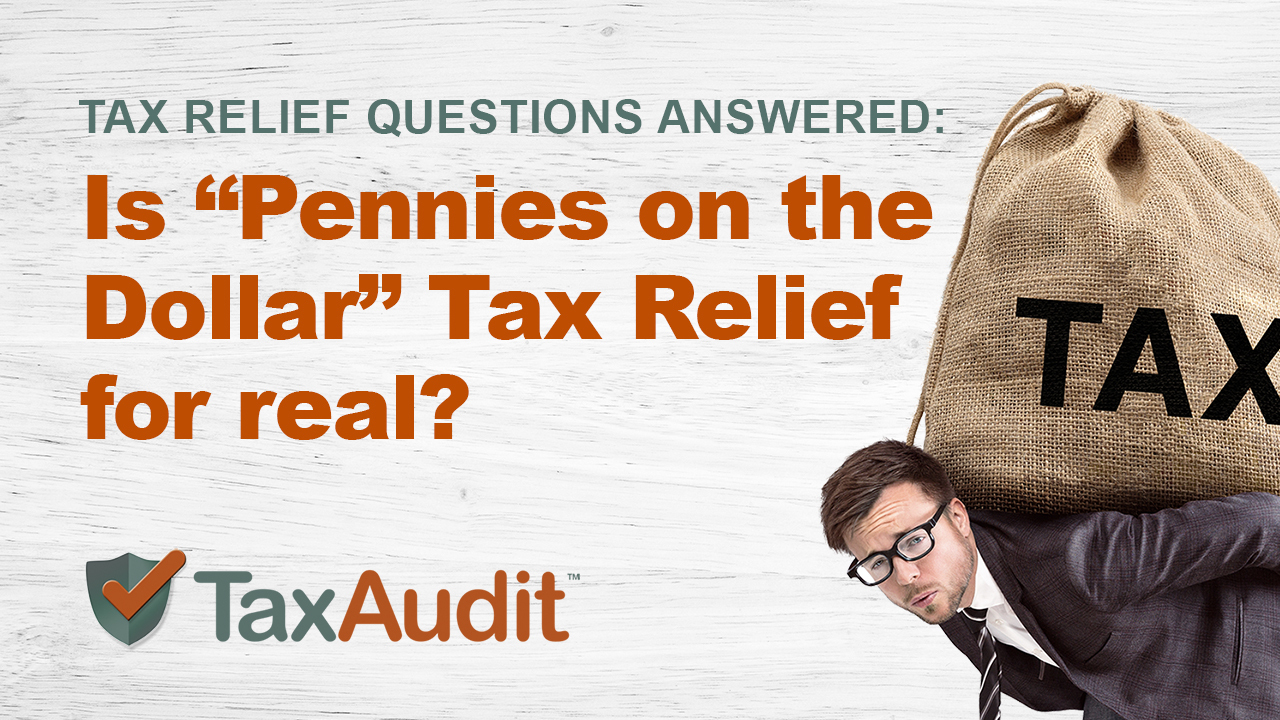In this blog, we will be talking about whether “pennies on the dollar” claims you hear on radio or late-night TV ads are real.
All of us, at one time or another, have probably seen the late-night commercials where a tax company claims that you can settle your tax debt for pennies on the dollar. However, there are many nuances behind that claim. What these companies and claims do not tell you is that they are actually referring to the IRS Offer in Compromise program. So, while it might be possible to settle your liability for much less than what you owe (sometimes for cents on the dollar), it is entirely based on your ability to pay and is up to the discretion of the IRS.

What is an Offer in Compromise?
An IRS Offer Compromise (OIC) is an attempt to settle your tax liability with the IRS for less than what is owed.
How could an Offer in Compromise help me?
Every taxpayer is different. One example we can give is that of a client we helped previously. This taxpayer owed the IRS almost $200,000. Unfortunately, around the time he incurred this debt, he became disabled, lost assets, and ultimately had to file for bankruptcy. He didn’t have much for the IRS to collect, as disability payments were his only source of income. We went through the process of filing an Offer in Compromise on his behalf. After that process, the almost $200,000 liability was settled with the IRS for $100.
However, if that specific taxpayer had sufficient assets to pay the debt in full, the IRS would not have settled for $100. The Offer in Compromise program is entirely based on your ability to pay the debt.
What does the Offer in Compromise process look like?
During this process, the IRS is going to consider all your assets, including:
- Real estate
- Financial assets
- Retirement accounts
- Investment accounts
- Disposable income, including wages, Social Security, pension income, disability, and retirement income
Basically, what the IRS is looking for is a full financial picture of your current situation. They will then use a formula to determine what your lowest settlement amount would be to settle your tax debt.
If I am interested in an Offer in Compromise, what should I do next?
At TaxAudit, we always advise taxpayers to start by using the
IRS Pre-Qualifier tool. This tool basically gives you an indication of whether there is at least a chance the IRS will accept your offer. We always suggest that taxpayers use this tool to check because if the IRS calculations show that you can pay the full balance, then it is not worth it to submit the offer. However, one important thing to note about the Offer in Compromise tool is that it is fairly generic – so if you have a unique circumstance you believe they're not taking into account, you may want to speak to a tax professional. However, the pre-qualifier tool is an easy (and free!) place to start.
What if I want to hire a tax professional but don’t know where to start?
Not to toot our own horn, but TaxAudit’s Tax Debt Relief team might be a great resource for you. We begin our process with a free, no-obligation consultation so that we can find out about your specific tax situation and determine the best next steps for you. Every taxpayer and tax situation is unique, so our goal is to develop a personalized plan to get you the best results. If you’d like to take advantage of this process – or just get more information, please
click here. We are ready to help!